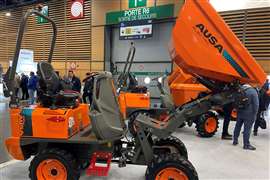Eco-design
01 May 2008
In august 2003 the european commission proposed its draft legislation on eco—design for energy—using products (the EuP Directive). The white paper was developed jointly between the Enterprise and Transport & Energy Directorate Generals. The proposal provides for impact assessments, widespread consultation and alternatives such as industry self—regulation. The framework directive will be based on Treaty Article 95, which safeguards the free movement of goods.
The Commission proposal would create a framework for the integration of various environmental considerations — energy efficiency, water consumption and noise emissions, for example — into the design of ‘energy using products’. An ‘energy using product ’ is defined as “a product which is dependent on energy input to work as intended and a product for the generation, transfer and measurement of such energy including parts, the environmental performance of which can be assessed independently”. Construction equipment would come under this definition.
However, whether specific products come under the remit of the directive will depend on a range of criteria. Among the most important will be the potential for improvement of environmental performance, and the relevance of the product to the internal market.
If a product became included in the Directive, the Commission would go on to set eco—design requirements. These could either be generic — identifying focal areas for improvement to be monitored by quantifiable indicators, but without legally binding thresholds, or specific — setting limit values for individual environmental aspects, such as energy efficiency.
Products that comply with harmonised international or European standards would be assumed to conform to the requirements of the EuP Directive.
So would products complying with certain eco labelling schemes.
Outline
In general terms, the process would begin with an impact assessment conducted by the Commission. This would involve stakeholders such as the industry, and environmental and consumer NGOs, and would identify the most cost—effective solutions for improving the product's environmental performance.
The analysis would confirm the importance of certain factors and the potential for improvement. These might include energy efficiency during use, dust emissions, noise and recyclability.
A draft proposal would be submitted for endorsement to the regulatory committee on the basis of the assessment, before final adoption by the Commission. The World Trade Organisation would also be notified.
Political Process
The European Parliament concluded its first reading of the legislation on 20 April 2004 and the Council reached political agreement on a common position on 10 June 2004. The second reading is now underway and a conclusion could be ready in the middle of this year. As always, the current common position could be changed by The European Parliament and the Council.
One of the key features of the legislation is that it will be based on the opportunities to improve the environmental performance of a given product. This implies that industry can avoid being subject to law if it makes suitable voluntary improvements.
The construction equipment industry already plays its part in reducing the environmental impact of its products, noise reduction and exhaust emission reduction being two obvious examples. In fact a lot of companies go much further than this with voluntary design codes based on the principles of eco—design and life—cycle—thinking.
Many companies already take into account an environmental review in their design, which can include raw material acquisition, black listing of harmful materials, the re—use of chemical products and so on. Given these facts, it is unlikely that implementing future measures would apply to construction equipment.






